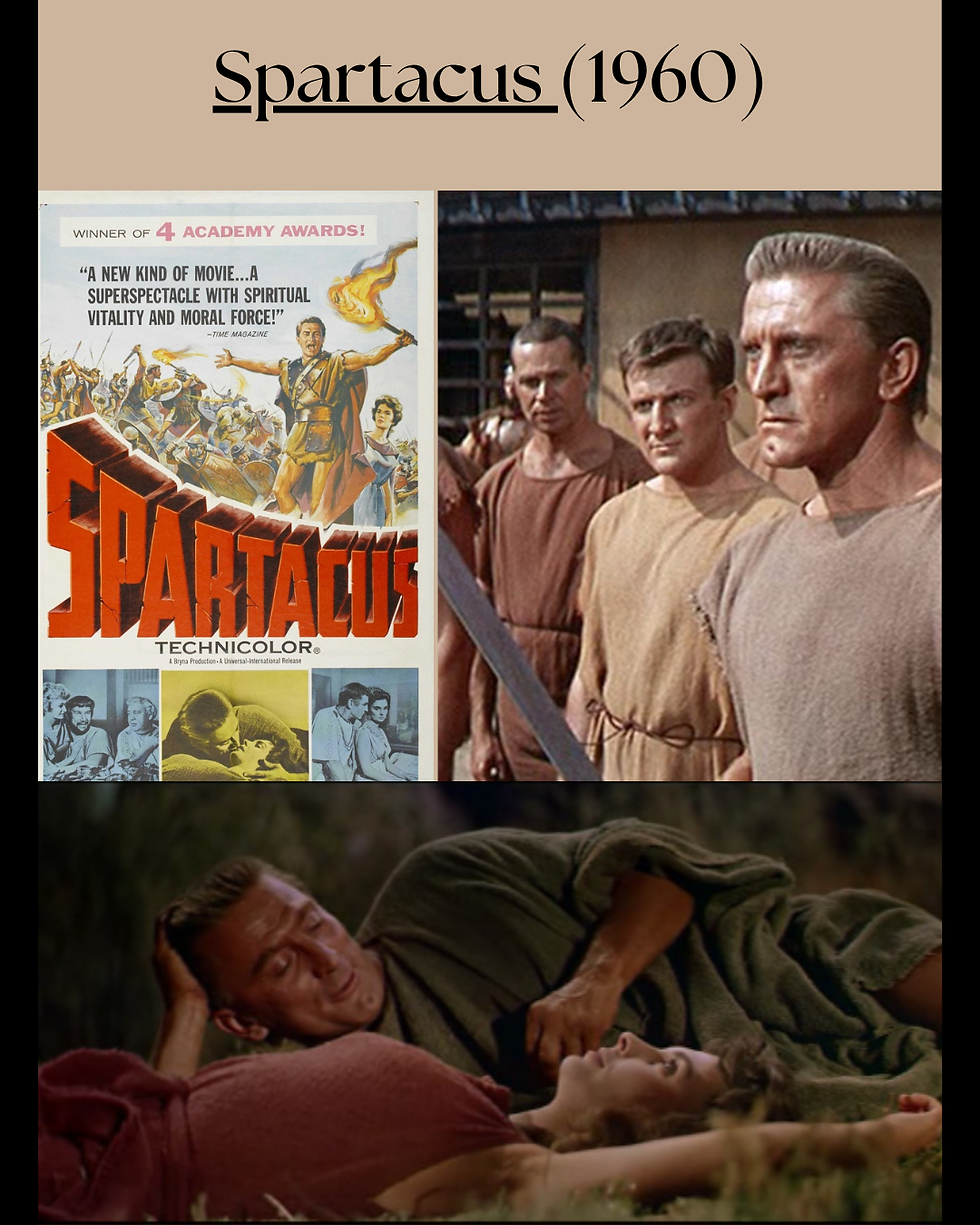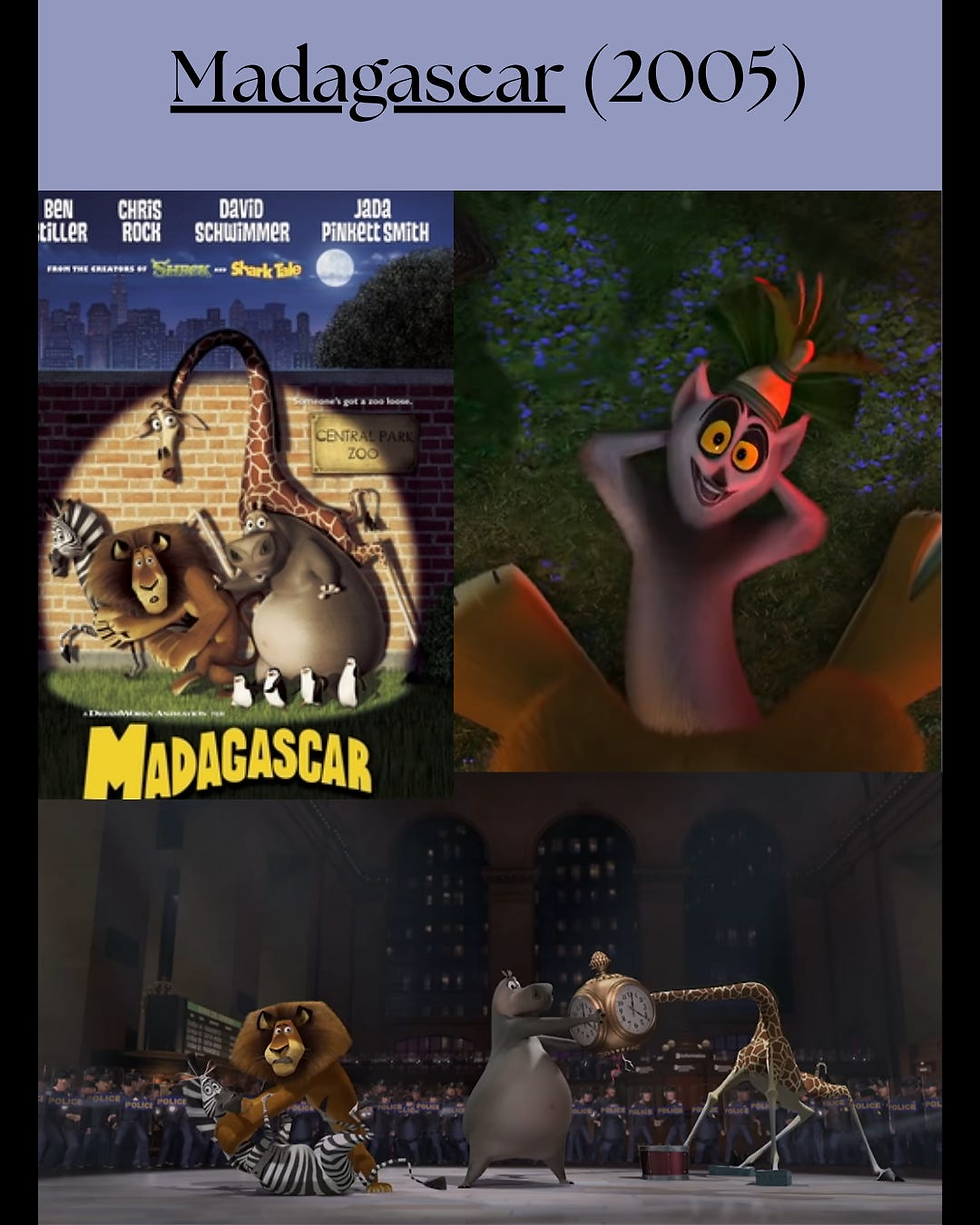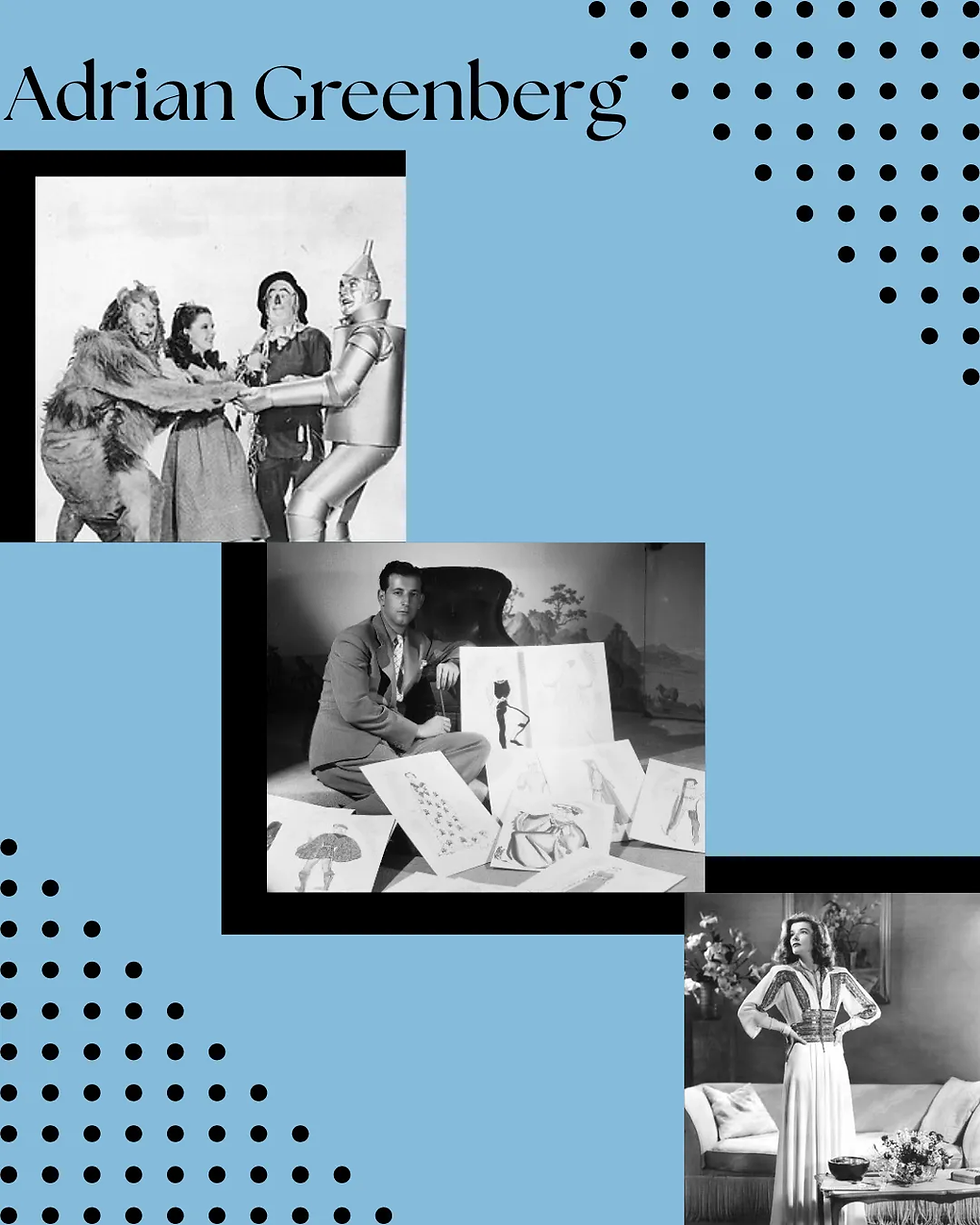Classic Films Celebrating Anniversaries in 2025
- Tina Ter-Akopyan
- Jun 19
- 9 min read

The power of a film comes from its ability to transcend time and resonate with audiences decades after its release. While some movies might not find success initially, they can eventually find their way into the cultural consciousness. In celebration of movies that continue to impact and influence us, let’s take a look at some classics reaching milestone anniversaries this year.
Mildred Pierce (1945)

MILDRED PIERCE
“Personally, Veda’s convinced me that alligators have the right idea. They eat their young.”
Celebrating its 80th anniversary, Mildred Pierce is a groundbreaking film that helped broaden the stereotypes often associated with the film noir genre. Starring the bold and powerful Joan Crawford as the titular character, the story centers around the hard-working single mother, who works her way up and transforms into a successful businesswoman during Depression-era Los Angeles. The film marked a major milestone for Crawford, who won her first and only Oscar for her performance.
Adapting author James M. Cain’s novel, director Michael Curtiz saw an opportunity to reshape this melodramatic story into a film noir. During the height of World War II, the film noir genre reflected the disillusionment and cynicism permeating throughout society. A crime genre with dark shadowy aesthetics, the film noir is usually told through the perspective of a cold and emotionally distanced male lead, who struggles with his moral compass. Meanwhile, the women are characterized as femme fatales, who are seductive, mysterious, and deadly. However, breaking these tropes, Mildred Pierce centers around the perspective of a strong-willed female character, who works tooth and nail to protect and take care of her family.
Following the conventions of the film noir, the movie starts with Mildred recounting the events leading up to her second husband’s murder. The mystery of his murder slowly unravels as Mildred tells the story of her rise from a divorced single mother working day and night to take care of her children to a successful restaurant owner. Despite living the American Dream, both her daughter Vera (Ann Blyth) and her second husband (Zachary Scott) exploit Mildred’s kindness and make her life miserable. Paired with cinematographer Ernest Hall, Curtiz relied on the visual tone of a film noir to unearth the seediness and superficiality lying under the picture-perfect homes scattered across Los Angeles.
The Night of the Hunter (1955)

PREACHER HARRY POWELL
“Ah, little lad, you're starin' at my fingers. Would you like me to tell you the little story of Right Hand-Left Hand - the story of good and evil?”
Upon its release in 1955, this daring Southern gothic thriller was labeled a critical and box office failure, ending the short-lived directing career of actor Charles Laughton. Integrating subtle critiques of religious institutions, the film also faced forceful backlash and censorship from the Hays Code. However, seventy later, scholars and filmmakers reappraised The Night of the Hunter as one of the most important and ambitious films of the 1950s.
The Night of the Hunter tells the story of two young children running away from Preacher Harry Powell, a serial killer played by the Robert Mitchum, across the deep South. Laughton masterfully crafted a striking visual tone that balances the dread and darkness of Powell’s presence with the innocence and light of the children. In partnership with cinematographer Stanely Cortez, who famously worked with Orson Welles, Laughton aimed to achieve an almost nightmarish fairytale feel to the film. Inspired by the silent films and German Expressionism, Laughton integrated visual motifs and played with light and dark shadows to flesh out the sinister undertone of this story.
On top of the stunning visual storytelling, Robert Mitchum gives an unsettling yet mesmerizing performance as the charlatan preacher. Hiding his pernicious nature under the clothes and charm of a preacher, Mitchum knows exactly when to underplay and exaggerate his performance to capture the mercurial behavior of Powell.
Despite its initial failure, the film gained traction as a cult classic and has gone onto influence modern-day directors. Most famously, Spike Lee referenced the Love and Hate tattoos on Preacher Powell’s knuckles as inspiration for Radio Raheem’s Love and Hate rings in Do the Right Thing (1989). Other filmmakers, like David Lynch and Guillermo del Torro, have also taken inspiration from the film, specifically on how Laughton used surrealism to reveal the dark underbelly of the America.
Spartacus (1960)

SPARTACUS
“When a free man dies, he loses the pleasure of life. A slave loses his pain. Death is the only freedom a slave knows. That's why he's not afraid of it. That's why we'll win.”
While Stanely Kubrick’s career is defined by his science fiction and supernatural films, such as 2001: A Space Odyssey (1968) and The Shining (1980), Kubrick’s ambitious take on the epic story of Spartacus earlier in his career demonstrated his massive talents.
As one of the most expensive films produced in Hollywood at the time, Spartacus was an enormous undertaking. Actor Kirk Douglas, who spearheaded the film and independently produced it, spent months looking for the perfect writer to bring the legend of Spartacus to life. While most epics of the era prioritized spectacle over story, Douglas wanted to create an epic that maintained an intriguing narrative with fully fleshed characters. Eventually, after many mistrials, Douglas landed on screenwriter Dalton Trumbo, who, at the time, was blacklisted for his refusal to cooperate with the House of Un-American Activities Committee during the McCarthy era. The inclusion of Trumbo in the credits broke the notorious blacklist and led to an Oscar for Best Screenplay.
Many have cited the famous ending, where all the slaves following Spartacus protect the identity of their leader by claiming “I’m Spartacus,” as an allegory for the political tensions of 1950s. Similar to the Spartacus’s followers, hundreds of screenwriters and actors refused to bend down to the authoritarian-leaning tactics of the U.S. government by providing names of other artists, who may or may not have been associated with the Communist Party.
Kubrick later recalled his experience of making Spartacus as restrictive and difficult because of censorship attempts and his collaboration with Douglas. Nonetheless, the achievements of this film gave the director his break into Hollywood and the artistic freedom to pursue his other masterpieces later in his career. With the precise visual eye of Kubrick, the sweeping and grand landscapes cinematographer Russel Metty beautifully captures, and the grounded storytelling of Trumbo, Spartacus is the pinnacle of a Hollywood epic.
Jaws (1975)

CAPTAIN QUINN
“I don't want no volunteers, I don't want no mates, there's just too many captains on this island. $10,000 for me by myself. For that you get the head, the tail, the whole damn thing.”
Da-dum, da-dum…fifty years ago, those two ominous notes, written by composer John Williams, introduced the iconic great white shark who would redefine the standard of Hollywood filmmaking forever. Director Steven Spielberg splashed into Hollywood with his legendary blockbuster hit Jaws in 1975. Straight off the critical acclaim of his feature directorial debut, The Sugarland Express (1974), Spielberg was approached by Universal Studios to direct the film adaptation of the bestselling novel written by Peter Benchley about a killer shark threatening a small New England town.
With a 3.5-million-dollar budget and sixty days to film, the 26-year-old director and his crew headed out to Martha’s Vineyard to start production. Reflecting on the experience, Spielberg noted how his naiveté and ambition to film at sea might have heightened the difficulty of making the film but, at the end, also contributed to its thrilling and realistic visuals. The art department built an almost real-life sized animatronic shark called Bruce, who was named after Spielberg’s lawyer. Placed within the middle of the ocean and constantly breaking down because of the violent waves, the crew struggled to capture enough coverage of Bruce. As a result, Spielberg relied heavily on John Williams to create a score that would heighten Bruce’s presence off-screen. Despite all the obstacles the production faced, including 159 shooting days and surpassing the original budget, the film proved a massive success and showed the potential movies had to attract crowds to the theaters.
While Jaws can be watched simply as a spectacle-driven action film, Spielberg uses the presence of the shark in the small beach town as a catalyst to explore the greedy and opportunistic nature of society. The real villain of the story is ultimately the mayor of the town, who keeps the beach open despite the dangers. With the film returning to theaters in honor of its 50th anniversary, Jaws continues to have a lasting impact that spans across generations and highlights the magic of Hollywood moviemaking.
Witness (1985)

ELI LAPP
“This gun of the hand is for the taking of human life. We believe it is wrong to take a life. That is only for God. Many times wars have come and people have said to us: you must fight, you must kill, it is the only way to preserve the good. But Samuel, there's never only one way. Remember that. Would you kill another man?”
Once Jaws established the standard of the blockbuster hit, the 1980s brought on a wave of action-packed thrillers attempting to recreate the same amount of success. Through flashy action sequences and exaggerated plotlines, studios hoped to attract audiences through special effects rather than substance. However, Australian filmmaker Peter Weir highlighted the potential to craft an emotionally rounded yet entertaining action film in his suspense-driven film Witness. Set in an Amish village of rural Philadelphia, an unconventional backdrop for a detective thriller, Witness brings a new perspective to the genre and focuses on the tension between the two flip sides of America: the rural and urban.
After an Amish boy Samuel Lapp (Luke Haas) stumble upon a violent murder in the bathroom of 30th Street Railway Station, he becomes a key witness and target for the escaped murderer. When Detective Jack Book, played by Harrison Ford, realizes that the murder was an inside job, he also becomes a target and has no choice but to hide with Samuel and her widowed mother Rachel (Kelly McGillis) in their village. Forced to adhere to the astute life of the Amish, Book slowly cracks his tough shell and discovers the communal respect and support he struggles to find back in the city. Collaborating with cinematographer John Seale, Weir captures the simplicity and beauty of the Amish village in an almost documentary style.
Harrison Ford’s nuanced performance as Detective Book also helps bridge the gap between the two-world coming in clash with each other. After his breakout success with Star Wars and Indiana Jones franchises, Ford instantly became a Hollywood icon. However, Ford is not a typical action star, as seen through his performance in this film. Ford’s performance is infused with sensitivity and depth, as he depicts his affection for the Amish boy and his mother through simple gestures and eye movements. This film solidifies the fact that Ford is one of the most talented actors to grace the screen.
In addition to mystery and action driving the story forward, Weir explores the romantic undercurrent between Detective Book and Rachel, as they take care of one another and develop feelings despite coming from completely opposite worlds. While most films of 1980s focused on maximalism, Weir explained how he practiced restraint in portraying the romance of the narrative and focused on small moments between the couple, making their love and desire feel more palpable and real. Released forty years ago, Witness is a masterclass in crafting action film that not only entertains audiences but also paints a portrait of society.
Madagascar (2005)

KING JULIEN
“Where are you giants from?”
ALEX THE LION
“We're from New York.”
KING JULIEN
“All hail the New York Giants!”
While Madagascar doesn’t necessarily fall into the canon of the greatest films, this family-friend movie holds a nostalgic and spunky charm that showcases how sometimes a movie can stand the test of time by just being fun and entertaining.
Emerging as a competitor to Disney and Pixar Animation, DreamWorks Animation formed its distinctive style with its quirky humor and unusual characters in films like Sherk (2001). After a string of highs and lows, the studio released Madagascar, a simple story about a group of animals, who escape the Central Park Zoo to find their natural habitat but instead end up in Madagascar. Pampered and protected from the realities of the wilderness, Alex the Lion, Marty the Zebra, Gloria the Hippo, and Melman the Giraffe have to learn to adapt to the wilderness and find a new purpose, rather than just serving as entertainment for humans.
The stellar voice cast, including Ben Stiller and Chris Rock, perfectly captures each animal’s personality and allotted role in the friend group. However, arguably, the star of the show is King Julien, voiced by Sascha Barron Cohen. While originally the royal lemur was set to have only two lines in the film, Cohen improvised so many hilarious skits that directors decided to flesh out his character and include him in most of the film. With his sidekicks Maurice, voiced by Cedric the Entertainer, and Mort, voiced by Andy Reither, King Julien and the lemurs add an extra layer of silliness to the film. The inclusion of cultural references and mature jokes that might go over a child’s head (such as reference to American Beauty; yes, you heard that right) also allow adults to enjoy the comedy and humor of the story.
Although the CGI animation might not be as refined compared to today’s standards, Madagascar is joyous and silly film whose wacky and light-hearted nature will take you along for the ride and leave you singing with King Julien: “I like to move it, move it! We like to move it and move it! You like to move it!”
Acknowledging these film anniversaries gives us an opportunity to not only celebrate the monumental achievements of classic films but also to rewatch them with a new perspective and context.




